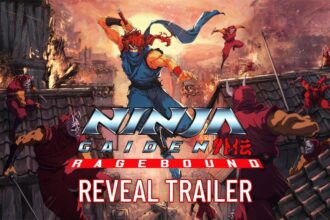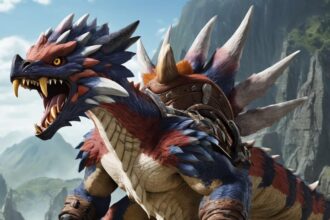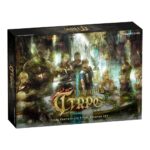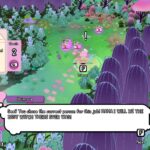The Universal Century. The Cosmic Era. The Anno Domini. Humanity’s penchant for cataloging its triumphs and tragedies extends even to the fictional timelines of giant robot warfare. And within the sprawling, meticulously crafted Universal Century Gundam Saga Future (UGSF) chronology, a new entry has appeared, a shadowy enigma slipping into the established narrative. Bandai Namco, the custodians of this complex mecha tapestry, have officially woven the “Shadow Labyrinth” into the UGSF’s fabric. But where does this new thread connect, and what secrets does it hold within its darkened corridors? Let’s delve into the intricacies of this latest addition and explore its potential impact on the broader UGSF narrative.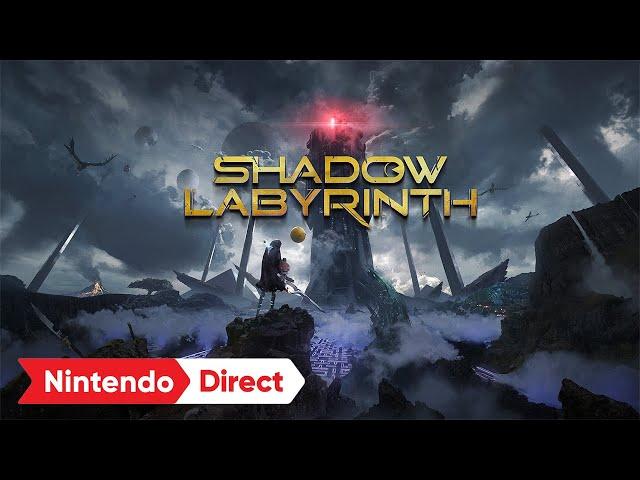
Shadow Labyrinth Unveiled: A New Chapter in the UGSF Saga
Buckle up, UGSF fans! Bandai Namco has dropped a bombshell, slotting the mysterious Shadow Labyrinth into the sprawling UGSF timeline. This long-awaited confirmation not only gives us a clearer picture of the series’ vast history, but raises exciting questions about how this previously unconnected title ties into established narratives. Where does this subterranean maze teeming with robotic terrors fit in the grand scheme of cosmic conflict? Does it predate the Bydo incidents? Or are we looking at a new threat entirely, something lurking in the shadows while humanity grapples with familiar foes? The possibilities are tantalizing.
While concrete details remain scarce, this revelation has reignited passionate debate amongst fans. Theories abound, connecting Shadow Labyrinth’s unique mechanics and aesthetic to other UGSF entries. Some speculate a link to the powerful ancient technology seen in G Darius, citing similarities in the biomechanical designs. Others believe the labyrinth itself might be a forgotten military installation, a precursor to the advanced weaponry deployed throughout the series. Only time will tell which theories hold water. Until then, speculation is running wild, fueled by the following key aspects currently under discussion amongst the UGSF community:
| Aspect | Discussion Points |
|---|---|
| Technology | Bio-mechanical influences, Energy Weaponry Similarities, Potential connection to ancient civilizations. |
| Enemies | Robotic nature, Strategic behavior, Origin and purpose within the UGSF universe. |
| Setting | The Labyrinth’s design, Its placement within the known galaxy, Potential connections to other locations. |

Exploring the Chronological Placement of Shadow Labyrinth
Bandai Namco’s recent update has finally given us a clearer picture of where Shadow Labyrinth fits within the sprawling United Galaxy Space Force (UGSF) timeline. While some speculated a connection to the events of Bosconian due to thematic similarities, the official placement reveals a surprisingly later entry. It now firmly resides within the “Post-Xevious Era,” following the exploits of the Solvalou and its pivotal role in repelling the GAMP invasion. This raises intriguing questions about the state of the galaxy after the apparent victory over GAMP, and how the bio-engineered horrors of the labyrinth relate to the previous conflicts. Is it a lingering remnant of GAMP technology? Or perhaps a new threat emerging from the ashes of the war?
This placement opens up exciting possibilities for future narratives within the UGSF universe. What’s particularly fascinating is its proximity to the unexplored period preceding Gaplus. The table below illustrates a simplified timeline snippet:
| Game | Era | Key Event |
|---|---|---|
| Xevious | Post-Bosconian Era | Defeat of GAMP |
| Shadow Labyrinth | Post-Xevious Era | Exploration of the Labyrinth |
| Gaplus | Post-Xevious Era | Encounter with the Blash |
The chronological closeness of Shadow Labyrinth and Gaplus hints at potential connections waiting to be uncovered. Could the labyrinth’s secrets hold clues to the origins of the Blash? Or perhaps the devastating biological weaponry foreshadows future conflicts within the UGSF saga. This new placement provides fertile ground for speculation, deepening the lore and enriching the UGSF universe for years to come.

Unraveling the Mysteries of Shadow Labyrinths Narrative
Bandai Namco’s surprise inclusion of Shadow Labyrinth within the broader Unified Galactic Space Federation (UGSF) timeline has sent ripples of intrigue throughout the gaming community. Previously considered a standalone title, its newly established connection raises fascinating questions about its place in the overarching narrative. Does it serve as a prequel, offering a glimpse into the early days of UGSF technology and conflict? Or might it be a parallel story, exploring unseen struggles within the established universe? The presence of seemingly familiar technology, like the laser weaponry and mecha designs, certainly hints at deep-seated connections yet to be fully explored. How these links intertwine with established UGSF lore, however, remains a delicious mystery ripe for speculation.
The game’s core mechanics, emphasizing resource management and strategic maneuvering within claustrophobic environments, now take on new meaning. Could the labyrinth itself be a testing ground for technology later adopted by the UGSF military? Or perhaps a forgotten training simulation, its challenges echoing in the real battles faced by future generations? Examining some of these possibilities, in relation to already known UGSF conflicts, highlights the narrative potential:
| Shadow Labyrinth Element | Potential UGSF Connection |
| Energy Management Mechanics | Early Prototypes of Belkan Energy Weapons |
| Maze-like Environments | Underground Training Facilities on Leasath |
| Limited Visibility & Sensor Disruption | The Use of ECM in the Circum-Pacific War |
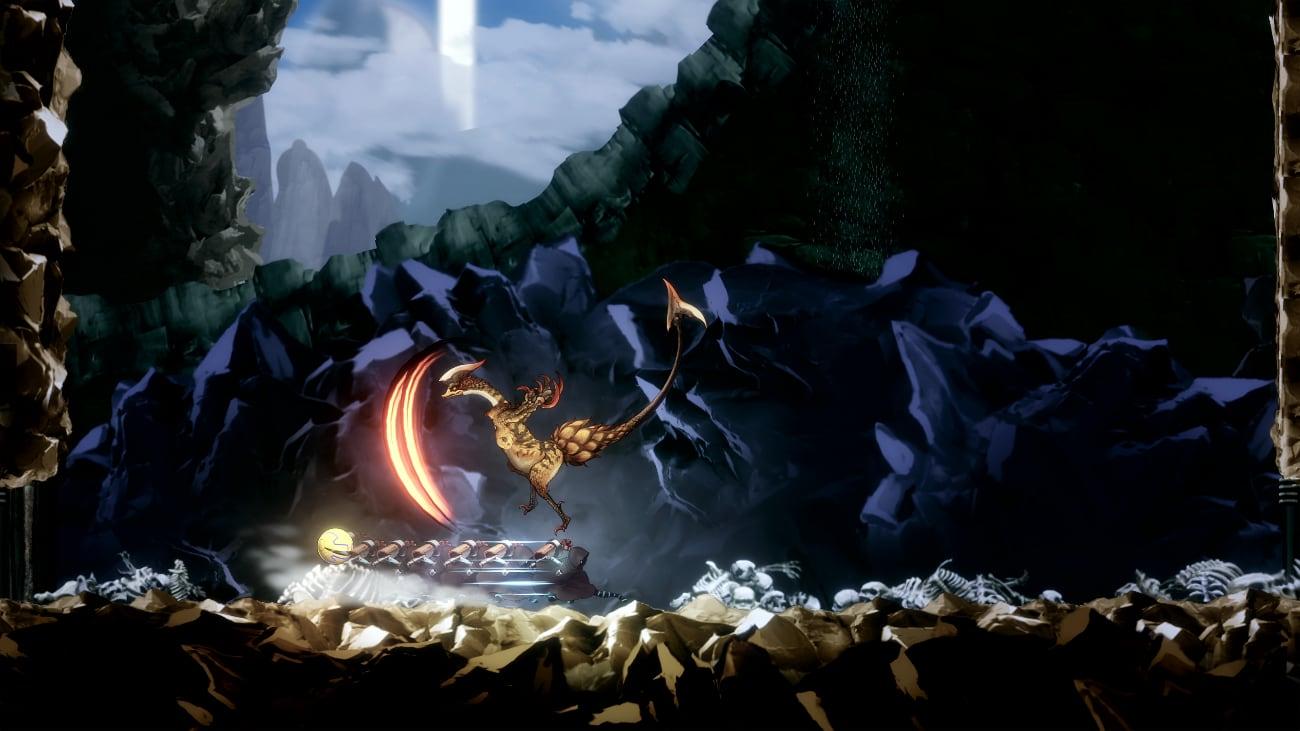
Shadow Labyrinths Gameplay: A Departure from Tradition?
Forget the sprawling space operas and epic fleet battles you might associate with the Unified Galaxy Space Force (UGSF) series. Shadow Labyrinth takes a sharp turn, plunging players into claustrophobic, alien corridors teeming with unknown dangers. This isn’t about commanding fleets; it’s about survival. Think less Star Luster and more… well, imagine if Metroid and Dark Souls had a baby in space. Resource management is key, with limited ammunition and a constant need to scavenge for supplies within the twisting maze. The game’s emphasis on stealth and careful exploration marks a radical shift from the series’ usual bombastic action.
Adding to the intrigue is the unsettlingly quiet atmosphere punctuated by the echoes of your own footsteps and the unsettling sounds of unseen creatures. The labyrinth itself is a character, its shifting layout and hidden traps keeping players on edge. Is this ancient structure a forgotten relic, a living organism, or something far more sinister? Bandai Namco remains tight-lipped on concrete story details, but the snippets released so far hint at a chilling narrative experience. Here’s what we know (or think we know) about Shadow Labyrinth‘s core gameplay mechanics:
| Feature | Description |
| Combat | Close-quarters, emphasizing stealth and precision. |
| Exploration | Non-linear, with interconnected pathways and hidden areas. |
| Progression | Character upgrades and new abilities tied to exploration and resource gathering. |
| Atmosphere | Oppressive and tense, focusing on psychological horror elements. |
Will this blend of survival horror and classic UGSF lore resonate with fans? Only time will tell.
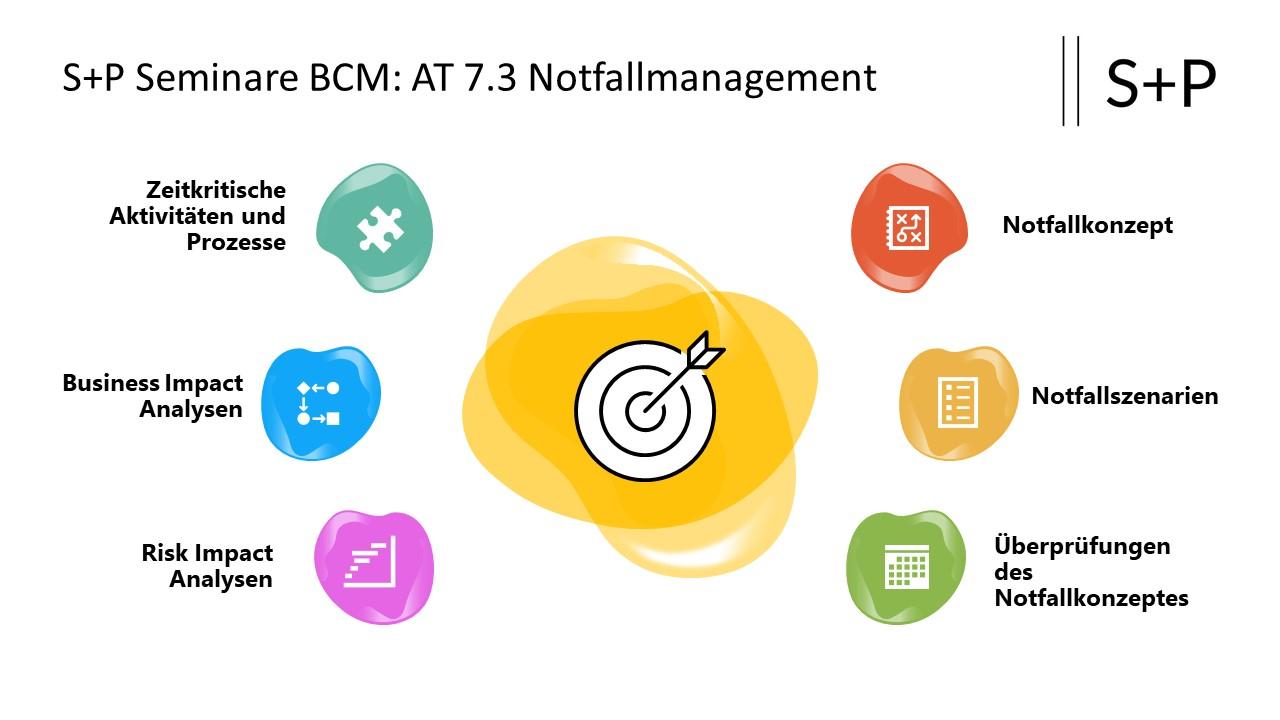
The Impact of Shadow Labyrinth on the UGSF Universe
The inclusion of Shadow Labyrinth into the United Galaxy Space Force (UGSF) saga sends ripples through the established timeline. While seemingly a standalone adventure focusing on the exploits of Katana Faraway, the game’s subtle connections to previous titles hint at a larger narrative significance. Katana’s discovery of ancient Balamoan technology within the labyrinth raises intriguing questions about the civilization’s influence throughout the galaxy and its potential connection to recurring UGSF threats. The implications are far-reaching, suggesting a hidden history that could rewrite our understanding of key events, like the First Balamoan War. The presence of previously unseen bio-engineered creatures within the Labyrinth further complicates the narrative, hinting at a level of Balamoan technological advancement beyond what was previously understood. This begs the question: what other secrets does this ancient civilization hold, and how might they impact the UGSF’s future?
Shadow Labyrinth‘s impact also extends to the present-day UGSF military doctrine. Katana’s reliance on stealth and close-quarters combat techniques, a stark departure from the large-scale space battles seen in other titles, prompts a reassessment of standard UGSF operating procedures. Could her methods, honed within the confines of the Labyrinth, inform future special operations training? The game also introduces unique weaponry and equipment, opening up new avenues for technological research and development within the UGSF. Analyzing Katana’s effectiveness with these tools could lead to significant advancements in infantry combat technology. The following table highlights some of these key elements:
| Element | Impact |
|---|---|
| Close-Quarters Combat Focus | Potential shift in UGSF training protocols. |
| Ancient Balamoan Technology | New research avenues for UGSF scientists. |
| Specialized Equipment | Development of advanced infantry gear. |

Analyzing the Connections Between Shadow Labyrinth and Existing UGSF Lore
The surprise announcement of Shadow Labyrinth has sent ripples through the UGSF community. Many are eager to dissect its place within the established timeline, particularly given its seemingly isolated setting and unique monster designs. While Bandai Namco has remained tight-lipped on explicit connections, the game’s use of “Bydo-like” creatures and advanced energy weaponry immediately sparks comparisons to other titles. Could this be a lost colony experiment gone wrong, perhaps related to the failed Bydo containment efforts seen in Darius Gaiden? The labyrinthine level design also brings to mind the complex, often bio-mechanical structures found in Gynoug and Metal Black. Are we witnessing a new evolutionary stage of the Bydo, or something else entirely? The mysteries surrounding Shadow Labyrinth deepen the intrigue, promising a rich narrative excavation for dedicated fans.
One fascinating avenue of speculation lies in the potential link between Shadow Labyrinth and the lesser-known UGSF entry, Galaxy Fight. Both feature a diverse cast of characters battling grotesque, bio-engineered monstrosities. Could the Roving King, the enigmatic antagonist of Galaxy Fight, have a hand in the events of Shadow Labyrinth? This connection, while tenuous, opens the door for an expansion of the UGSF cosmology. The table below highlights some key similarities and differences between the two games, providing fodder for further discussion:
| Feature | Shadow Labyrinth | Galaxy Fight |
| Antagonist Type | Bio-engineered Creatures | Bio-engineered Creatures, Roving King |
| Setting | Enclosed Labyrinth | Varied Galactic Locations |
| Protagonist | Unknown | Diverse Cast |
| Confirmed Bydo Connection | Implied | Unclear |
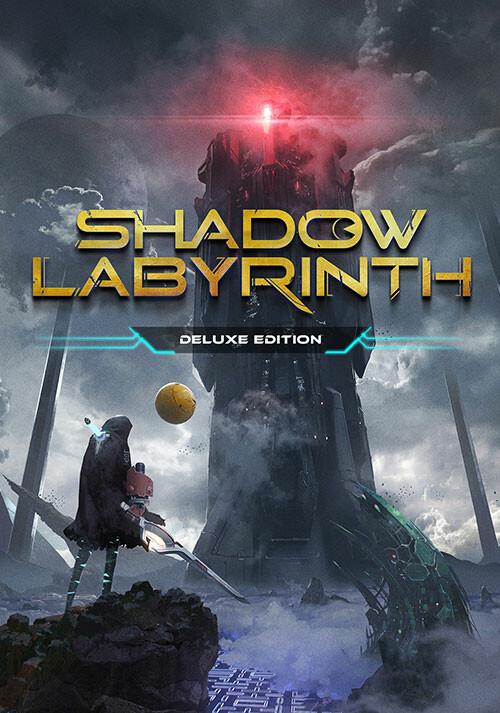
Speculation and Theories on Shadow Labyrinths Significance
The inclusion of Shadow Labyrinth in the official UGSF timeline has ignited a firestorm of speculation. Some believe its placement, chronologically between Ace Combat 5 and Ace Combat Zero, hints at a deeper connection to the Usean Continental War. Could the labyrinthine asteroid base, with its advanced technology and mysterious origins, be a clandestine Belkan project, continued in secret after the nation’s supposed demise? Its unique weapon systems and peculiar energy signatures certainly lend credence to this theory. Furthermore, the presence of apparently unmanned drones within the Labyrinth raises questions about its automated defenses and the possibility of a Belkan AI research program, far surpassing anything known at the time. Was this a last-ditch effort to regain power, a hidden ace up their sleeve, or something else entirely?
Another compelling theory revolves around the enigmatic organization known only as “Z.O.E.”. Their apparent connection to the Labyrinth, coupled with their advanced technology, suggests a possible link to the development or even control of the base. Were they a splinter group of Belkan scientists, or an entirely independent entity with its own agenda? A popular fan speculation ties Z.O.E. to the origins of the Excalibur, the powerful energy weapon showcased in Ace Combat Zero. Could the Labyrinth have served as a testing ground for this technology? The following table presents the arguments for and against this connection:
| Argument | For | Against |
|---|---|---|
| Timeline Proximity | Z.O.E. and Excalibur appear close to Shadow Labyrinth chronologically. | No confirmed direct link exists in canon materials yet. |
| Technological Similarity | Energy weapons in Shadow Labyrinth resemble Excalibur. | Could merely be similar advanced technology, not direct lineage. |
| Secretive Nature | Both Z.O.E. and the Labyrinth operations were highly classified. | Many Belkan and other projects were also covert. |

Shadow Labyrinths Potential Influence on Future UGSF Installments
The inclusion of Shadow Labyrinth into the sprawling United Galaxy Space Force (UGSF) saga has ignited speculation regarding its potential ripple effects on future installments. Could its gritty, survival-horror atmosphere influence upcoming titles? Will we see a shift in tone, embracing a darker, more claustrophobic aesthetic? The labyrinth itself, with its enigmatic alien technology and unsettling secrets, presents a wealth of narrative opportunities. Perhaps future games will explore the origins of this structure, delving deeper into the mysteries surrounding its creation and purpose. The fragmented memories and psychological trauma experienced by the protagonists also open doors for exploring the psychological impact of deep space exploration and isolation in future titles. We might even see new game mechanics inspired by Shadow Labyrinth, such as resource scavenging, sanity management, or psychological horror elements.
Furthermore, the introduction of new alien species within Shadow Labyrinth offers exciting possibilities for expanding the UGSF universe. These creatures, their motivations, and their connection to the labyrinth itself could become central plot points in subsequent games. Consider the potential for expanded bestiaries, new weaponry designed to combat these threats, and storylines that explore the wider galactic conflicts hinted at in Shadow Labyrinth. The table below illustrates some potential avenues for integrating elements from Shadow Labyrinth into future UGSF installments:
| Element | Potential Influence |
|---|---|
| Alien Species | New antagonists, alliances, or even playable races |
| Technology | Advanced weaponry, new ship classes, unique gameplay mechanics |
| Themes | Focus on psychological impact, exploration of survival horror elements |
| Setting | Return to the Labyrinth, or exploration of similar environments |

Recommendations for Experiencing Shadow Labyrinth Within the UGSF Timeline
Delving into the newly-placed Shadow Labyrinth within the vast UGSF saga can be approached in several ways, depending on your preferred experience. For newcomers eager to understand the context surrounding this intriguing title, exploring the heroic tales of Mobile Suit Gundam first provides an excellent foundation. This lays the groundwork for understanding the technological and philosophical concepts that permeate much of the UGSF universe. Alternatively, beginning with Space Battleship Yamato offers a more classic space opera feel, setting the stage for the large-scale conflicts and epic struggles often found within UGSF narratives. For those seeking a more direct route into the grittier side of galactic warfare, tackling chronologically relevant entries like Macross or Galaxian3: Project Dragoon plunges you into the heart of intergalactic conflict, mirroring the tense atmosphere of Shadow Labyrinth.
To further tailor your UGSF journey, consider this curated list of pre-Shadow Labyrinth experiences based on desired themes:
- For Mecha Action: Mobile Suit Gundam, Super Dimension Fortress Macross
- For Space Opera Grandeur: Space Battleship Yamato, Star Blazers
- For Strategic Warfare: Galaxian3: Project Dragoon, Star Luster
| Focus | Recommended Title | Reason |
| Understanding Human-Alien Relations | Xevious | Introduces themes of ancient alien civilizations and their impact. |
| Experiencing Political Intrigue | Super Dimension Fortress Macross | Explores the complexities of integrating alien cultures and resulting conflicts. |
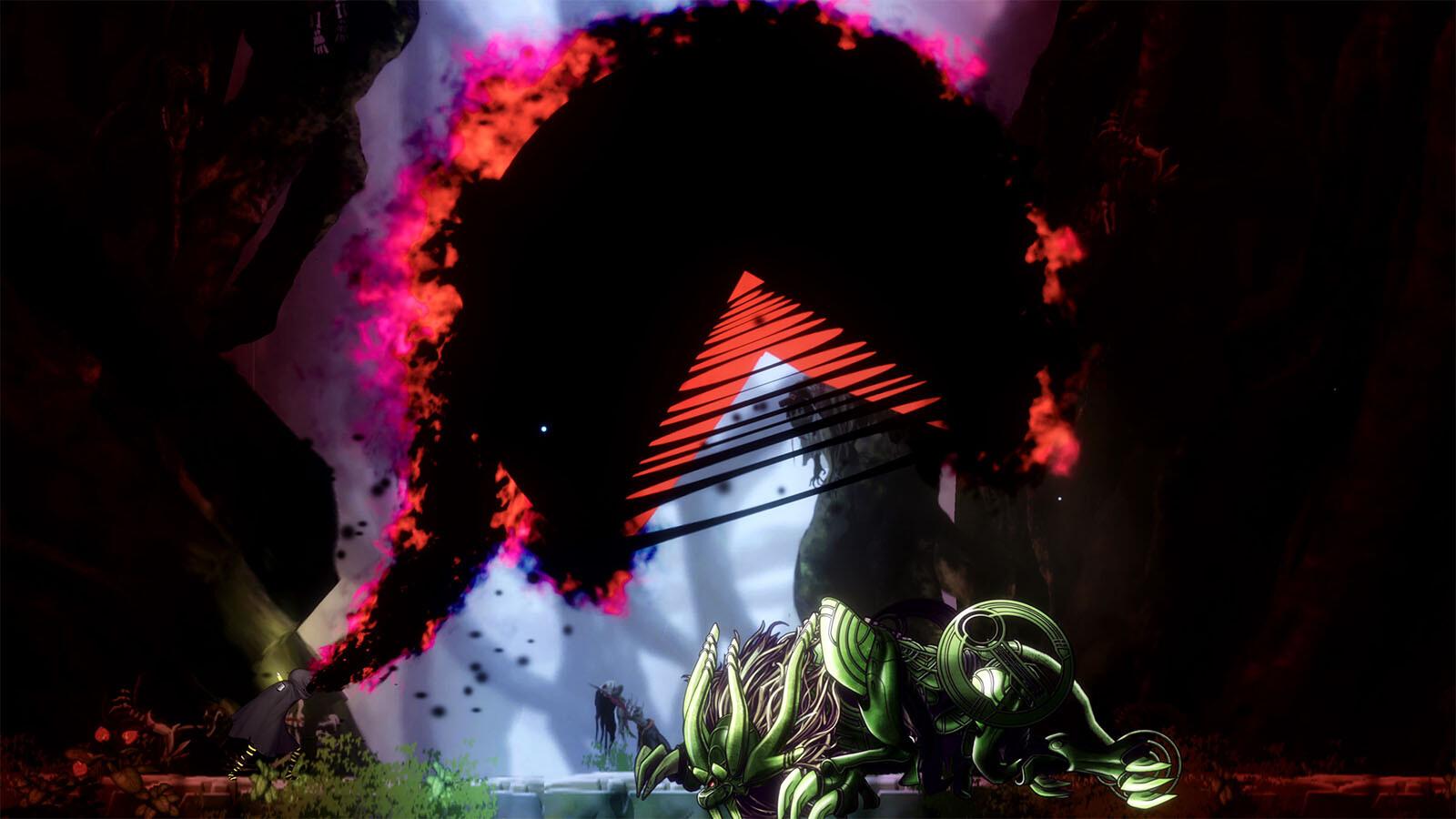
A Deeper Dive into Shadow Labyrinths Design and Development
The inclusion of Shadow Labyrinth within the vast UGSF (United Galaxy Space Force) timeline presents fascinating design challenges. Connecting a seemingly standalone, horror-infused experience to the traditionally sci-fi opera narrative of the UGSF demanded a delicate balance. The development team focused on weaving narrative threads that subtly tie the isolated, claustrophobic setting of the Labyrinth to established UGSF lore. Hints of forgotten technology, cryptic messages, and even the creatures themselves contain clues linking back to previously unexplored corners of the UGSF universe. This allows Shadow Labyrinth to add a new dimension of suspense and cosmic dread without disrupting the established narrative.
Considerable effort was dedicated to contrasting Shadow Labyrinth‘s gameplay with other UGSF titles. Instead of large-scale space battles and mecha combat, the focus shifted to survival, exploration, and puzzle-solving within the confines of the Labyrinth. This shift is reflected in the game’s design elements:
| Element | Shadow Labyrinth | Traditional UGSF |
| Gameplay Focus | Survival Horror, Puzzle | Space Combat, Strategy |
| Environment | Claustrophobic, Confined | Open Space, Planetary |
| Protagonist Role | Vulnerable Explorer | Powerful Pilot/Commander |
This differentiation allows Shadow Labyrinth to explore new thematic territory within the UGSF universe while offering a distinctly different gameplay experience.
The Future of the UGSF Timeline After Shadow Labyrinth
The inclusion of Shadow Labyrinth throws an intriguing wrench into the already complex UGSF timeline. Where once we had a relatively clear progression from the Leasathian war through the events of Space Griffon and beyond, we now must contend with this previously unplaced narrative. Does its inclusion retcon established lore? Does it hint at a branching timeline, a consequence perhaps of time travel shenanigans we’ve seen in other titles? The implications are vast, and theorists across the UGSF community are undoubtedly already hard at work piecing together the puzzle. One prevalent theory posits that Shadow Labyrinth falls within the “lost period” after the Fourth Leasathian War, offering a glimpse into a clandestine conflict fought under the cover of reconstruction. The gritty, survival-horror elements of Shadow Labyrinth certainly suggest a darker, more desperate era.
The ripple effects extend beyond mere chronological placement. Shadow Labyrinth could illuminate a forgotten chapter of Bydo research, or perhaps introduce a new, previously unknown faction. Consider the weaponry and technology at play; are we looking at prototypes of systems later perfected in other games? The possibilities are exciting! Let’s examine some potential connections based on recurring elements:
| Element | Potential Connections |
|---|---|
| Biological Weaponry | Bydo research, link to Space Griffon‘s Bio-Weapons Research Team |
| Advanced Energy Weapons | Precursors to Rayleon technology in later UGSF titles |
| Emphasis on Isolation/Containment | Possible ties to the Balbas incident |

Bandai Namcos Vision for the UGSF Universe: Expanding the Narrative
The United Galaxy Space Force (UGSF) saga grows richer with the surprise placement of Shadow Labyrinth into its sprawling timeline. While initially appearing disconnected from established UGSF lore, Bandai Namco has artfully woven the game’s narrative into the larger universe. The isolated and perilous environment of the titular labyrinth now serves as a crucial piece of lost UGSF history, a forgotten proving ground where experimental technologies and tactical doctrines were secretly tested. This connection adds compelling depth to pre-existing narratives, hinting at classified operations and clandestine advancements that shaped the UGSF’s rise to prominence. Consider this addition not just a footnote, but a missing link, strengthening the tapestry of the UGSF universe and inviting fans to re-examine long-held assumptions about the nature of galactic conflict.
The addition of Shadow Labyrinth also opens intriguing possibilities for future installments. The previously isolated narrative elements, such as the bioengineered creatures and mysterious energy sources encountered within the labyrinth, can now be seamlessly integrated into upcoming games. This bridging of storylines expands the potential conflicts and alliances within the UGSF universe. Imagine the implications:
- Lost Technology Resurfacing: Weapons and vehicles tested within the Labyrinth could reappear in future battles, disrupting established power balances.
- New Factions Emerging: Perhaps the creators of the Labyrinth remain active, pulling the strings from behind the scenes.
| Element | Impact |
|---|---|
| Labyrinth’s Purpose | Provides a testing ground for advanced technology |
| Bioengineered Creatures | Expands the UGSF’s known threats |
| Mysterious Energy Sources | Introduces potential new power dynamics |
The precise impact remains to be seen, but Shadow Labyrinth undoubtedly promises a more dynamic and interconnected future for the UGSF.
In Retrospect
The inclusion of Shadow Labyrinth within the sprawling UGSF saga adds another intriguing thread to the rich tapestry of galactic conflict, technological marvels, and human resilience. Whether this shadowy maze holds the key to unlocking deeper mysteries within the established narrative or simply offers a captivating standalone adventure remains to be seen. One thing is certain: the ever-expanding universe of UGSF continues to invite exploration and speculation, leaving fans eager to chart its unknown corners and uncover the secrets that lie within. Now, armed with this new piece of the puzzle, we can only wait and see what shadows the future holds for the UGSF timeline.

